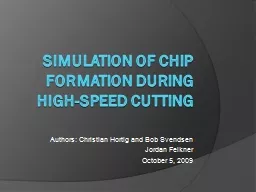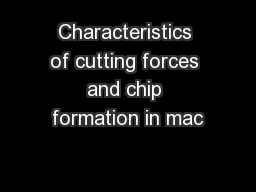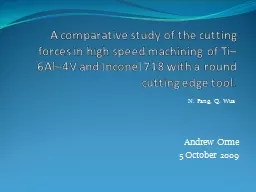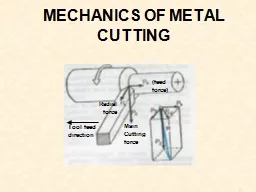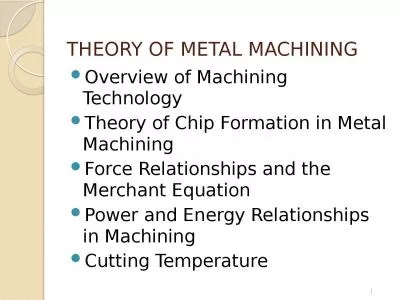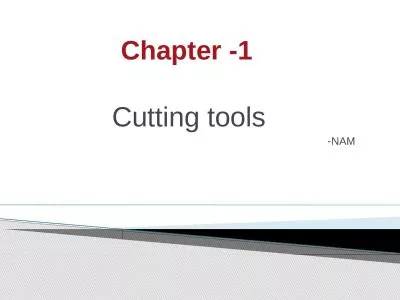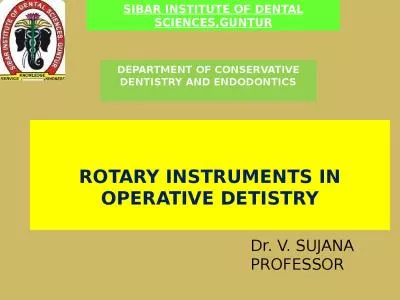PPT-Simulation of chip formation during high-speed cutting
Author : myesha-ticknor | Published Date : 2019-03-18
Authors Christian Hortig and Bob Svendsen Jordan Felkner October 5 2009 Purpose Model and simulate shear banding and chip formation during highspeed cutting
Presentation Embed Code
Download Presentation
Download Presentation The PPT/PDF document "Simulation of chip formation during high..." is the property of its rightful owner. Permission is granted to download and print the materials on this website for personal, non-commercial use only, and to display it on your personal computer provided you do not modify the materials and that you retain all copyright notices contained in the materials. By downloading content from our website, you accept the terms of this agreement.
Simulation of chip formation during high-speed cutting: Transcript
Download Rules Of Document
"Simulation of chip formation during high-speed cutting"The content belongs to its owner. You may download and print it for personal use, without modification, and keep all copyright notices. By downloading, you agree to these terms.
Related Documents

